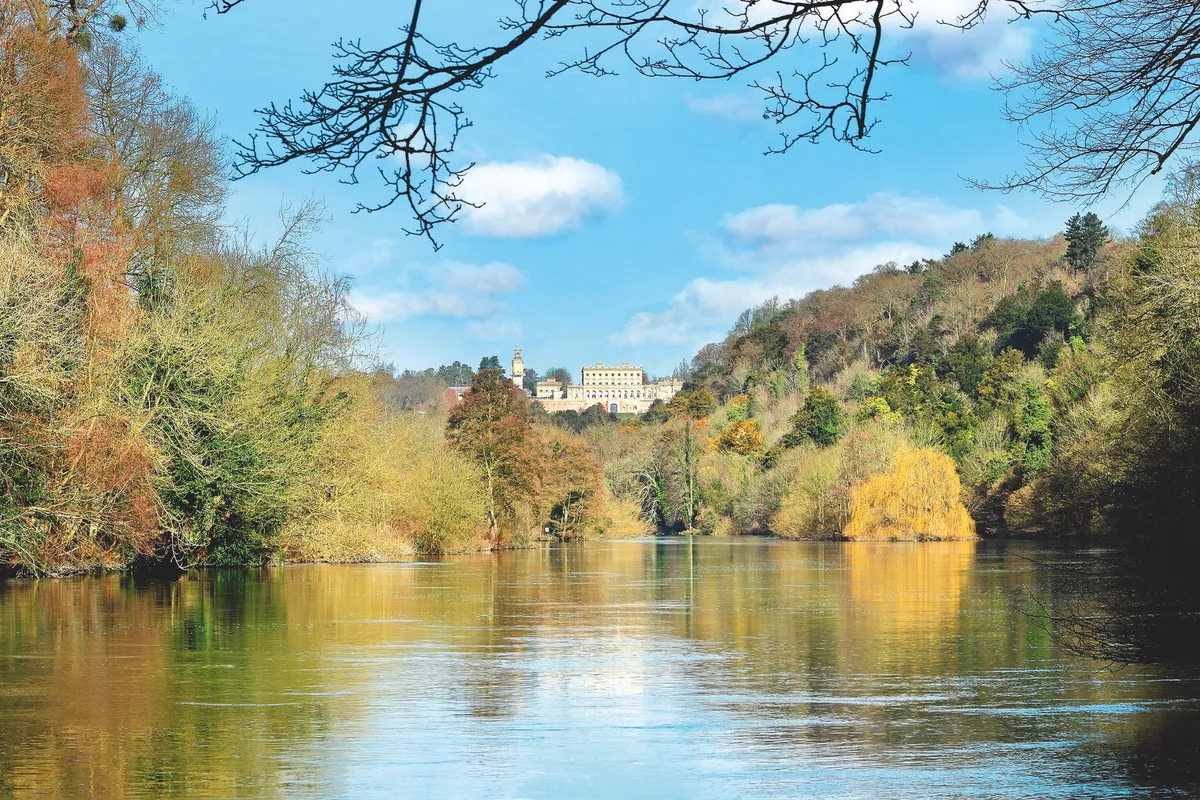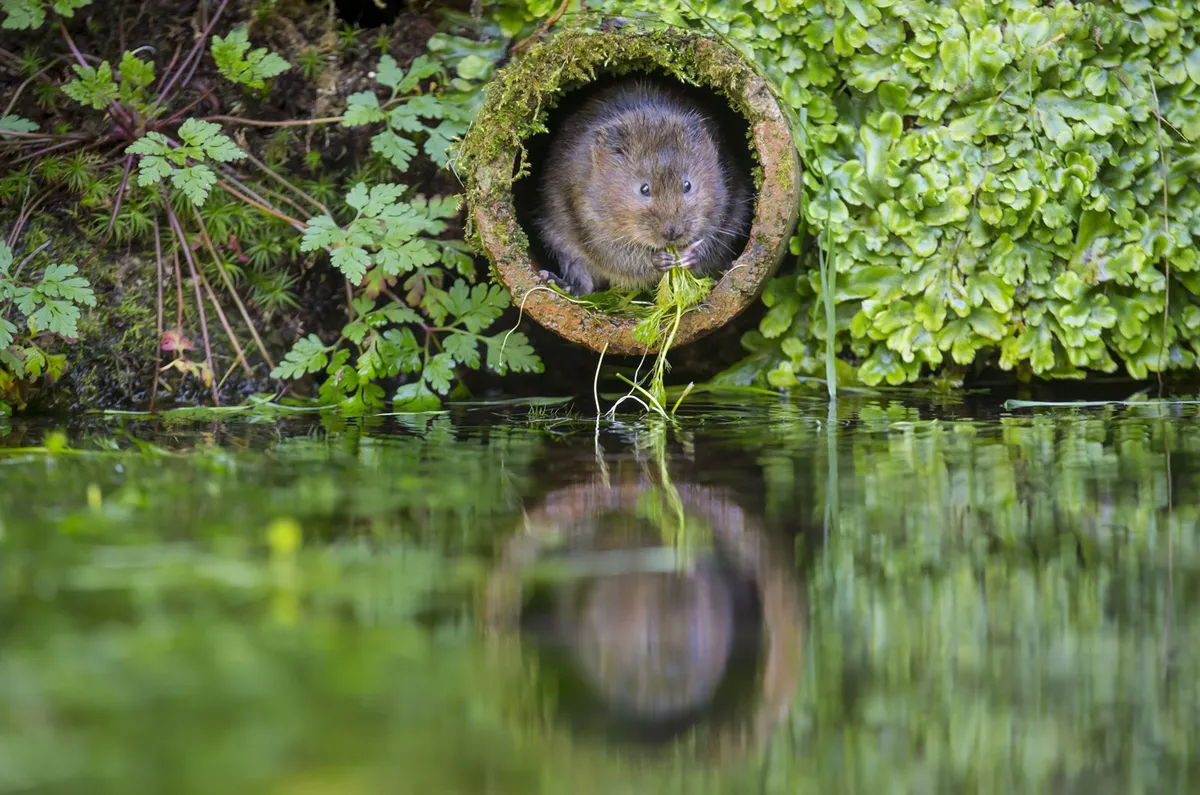"I love these little people; be kind to them,” was the single instruction author Kenneth Grahame gave to Ernest Shepard when Shepard agreed, with some misgivings, to illustrate a new edition of The Wind in the Willows, Grahame’s story of Mole, Rat, Badger and Toad.
It was 1930. Grahame was 71, all but a recluse, suffering from arteriosclerosis and fatty deterioration of the heart. He was confined to an armchair in Church Cottage, Pangbourne – the Thames-side house in which he would die two years later – a pretty, brick-built, irregular structure, with tall chimneys, a ship’s bell beside the front door and, in the garden, a grassy amphitheatre.
Shepard was impressed by Grahame’s deep attachment to his fictional creatures. In the 110 years since the book’s first publication, countless thousands of readers have felt the same affection for these walking, talking anthropomorphised British wild animals.
- Wild people: John Muir
- Wild people: swimming legend Mercedes Gleitze
- Wild people: writer Hope Bourne

Like the Beatrix Potter tales and AA Milne’s stories of Winnie the Pooh (also illustrated by Shepard), Grahame’s novel of riverbankers “messing about in boats” has become a cornerstone of childhood reading across the English-speaking world and beyond. Adults re-read it for its joyous comedy, its celebration of the camaraderie of good friends, its lyrical descriptions of unspoilt landscape and the tug of home, and its reminders of a vanished Edwardian world of wicker picnic baskets, horse-drawn gypsy caravans and velvety lawns of country houses.
For Kenneth Grahame himself, although the rural idyll he described had yet to disappear, The Wind in the Willows was every bit as escapist and exhilarating. A reviewer in The Times Literary Supplement in 1908 dismissed the book curtly: “As a contribution to natural history the work is negligible.” More accurately, the critic of the Saturday Review of Literature noted that “Rat, Toad and Mole are very human in their behaviour, and remind us of undergraduates of sporting proclivities”. Grahame had little interest in painstaking realism. Beatrix Potter’s criticism of Toad combing his hair – an impossibility
for any toad – bothered him not a jot.

Escape to an idyllic past
Grahame first embarked on his novel to entertain his son Alastair – whom he called Mouse – beginning when Alastair was only three, but his motives were more complex than simply amusing a precocious toddler. Grahame wrote to entertain himself. He wrote to recapture childhood memories of the house and garden in which he had grown up, The Mount at Cookham Dean in Berkshire. The large garden terraced over several levels, and was surrounded by copper beeches, ancient elms and laurels, with an orchard, a lily pond, rows of raspberry canes, a meadow thick with buttercups. Close at hand, a broad ribbon of the Thames, its course slowed by weirs and locks and overhung by willow trees and alders.
He wrote to celebrate old-fashioned rural hierarchies, in which landowners cared for their surrounds and their tenants, and part of his story is concerned with reminding Toad of the responsibilities of ownership of Toad Hall. And he wrote to escape the unhappiness of his marriage. This last motive was a powerful one for Kenneth Grahame, who felt consistently at odds with his domineering wife, Elspeth. Many readers of The Wind in the Willows may not register the virtual absence of female characters from the book’s pages.
The landscapes are an amalgam of his favourite childhood places
What appeals to 21st-century readers is what appealed to Grahame himself. Much of the novel consists of lingering descriptions of setting. The landscapes he describes are an amalgam of places he had known, especially in his childhood.
Grahame first saw water voles, which he always called “water rats”, along the banks of the Crinan Canal, when, as a small child, he moved with his parents from Edinburgh to Ardrishaig on the western slopes of Loch Fyne in Argyllshire. The Berkshire reaches of the Thames were Grahame’s first experience of English rivers. Over time, childhood memories of the river at Cookham Dean would merge with recollections of the Cherwell in Oxford, where he went to school from the age of nine.

Cherished rivers
As a young man recovering from bronchial illness, he travelled first to Cornwall’s Lizard Peninsula and, afterwards, the small fishing port of Fowey. A boat trip along the River Fowey to Golant played its part in shaping the vision of watery perfection that leaves Mole “bewitched, entranced, fascinated” at the beginning of The Wind in the Willows: “All was a-shake and a-shiver – glints and gleams and sparkles, rustle and swirl, chatter and bubble.”
Ernest Shepard recorded his meeting with Grahame at Church Cottage in 1930. “He told me of the river nearby, of the meadows where Mole broke ground that spring morning, of the banks where Rat had his house, of the pools where Otter hid, and of Wild Wood way up on the hill above the river… He would like, he said, to go with me to show me the river bank that he knew so well, ‘but now I cannot walk so far and you must find your way alone’.”

Disappearing ways of life
Clearly, at the end of his life, in his mind Grahame had transferred the location of his novel to that stretch of the Thames closest to Pangbourne, south-east of Oxford, even then within earshot of Oxford traffic. That this was not strictly the case hardly matters. Perhaps any sufficiently green, quintessentially ‘English’ expanse of riverside landscape would suffice.
Grahame’s writing is based on close observation, with a relish for natural details, but what mattered to him was the survival of countryside that he recognised, more than a century ago, as menaced by modern developments and the disappearance of age-old patterns of rural life. “As I pass through this beautiful world, always with an eye – I hope – for the beauty around me, year by year, I see things I have admired passing and perishing utterly,” he told an audience in the 1920s.
Grahame was not a prolific author. He wrote two volumes of autobiographical stories about children; The Wind in the Willows was his only novel. It is right that we continue to relish this inspiring story of friendship and adventure and, above all, the glory of the landscape.
Where is Toad Hall?
As we have seen, by the end of his life, even Kenneth Grahame himself was vague about the locations that inspired his much-loved novel. The main setting is almost certainly a stretch of the Thames, centred on Cookham Dean, that runs from Marlow to Pangbourne, with the deity Pan, in the chapter entitled ‘The Piper at the Gates of Dawn’, pictured at Hurley backwater, close to Marlow.
The Wild Wood is based on Quarry Wood above Cookham Dean, which Grahame knew from the years spent at The Mount. By contrast, the watermill where Rat picnics seems more likely to have been based on Golant on the River Fowey in Cornwall.
A number of houses have been suggested as models for Toad Hall, including Mapledurham House, Harleyford Manor, Hardwick Hall near Whitchurch-on-Thames, and Cliveden (pictured), which is visible above the riverbank beyond Cookham Lock.
Grahame returned to Cookham Dean as an adult, but was disappointed by new building, which he felt had shattered its rural peace. Instead, he and Elspeth bought a house in Blewbury, which he labelled “a little grey old-world Berkshire village, in King Alfred’s country”. Later, he described it as “only about 54 miles from London, but 5,400 years remote from it in every way”.
Words: Matthew Dennison
Main image ©Getty
